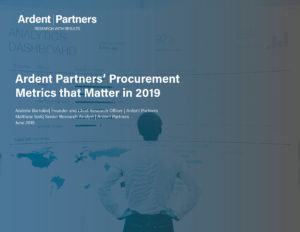Publisher’s Note: In 2019, Ardent Partners is celebrating 10 years of delivering “Research with Results” to Chief Procurement Officers (CPOs) and other readers of this site, including published reports, eBooks, presentations, insights, articles and events. To commemorate the occasion, we are going to reflect on the firm’s first decade by presenting this weekly “throwback” series that will include a blend of top articles from our earlier days on this site. Despite procurement’s recent advances, we believe these articles are as topical and relevant as the day they were published. And, in light of last week’s tumultuous market events and talk of a coming recession renewed, we thought this particular article is most appropriate for a throwback. Enjoy!
The dreaded dog days of summer can hit anyone. From the buy side to the supply side, we know they’re coming and yet, many enterprises keep getting hit, from the blind side.
Supply disruptions are in the news again. That the trade pubs, industry and enterprise blogs, and other media sites like this one focused on supply management are covering this topic is no surprise – supply assurance is a year-round topic and a year-round pressure for Chief Procurement Officers. But I’ve been interviewed twice in as many months by journalists from the largest of global business pubs who were writing stories focused on global supply constraints. In both cases, the subject was Asian-based suppliers, their general failure to ramp-up production in the face of steady and rising demand, and the overall business/market impact. (Sidebar: Not that you care, but in both cases, my “quote-ables” were left on the cutting room floor. No matter, I enjoyed the discussions.)
Many of the current problems are linked, primarily, to the usual summer supplier slowdown (dog days!) that happens in many industries which has been exacerbated by the broad failure, or hesitation of suppliers’ in many industries (for example: Telecom, Automotive, and most Manufacturing) to ramp up production after the deepest of deep recessions. I think hesitation, for many suppliers, is a more accurate description than failure.
At many of the presentations I delivered this spring, I walked the audience through an auto industry case study during the recession, as seen through the eyes of the CPO at a Tier 1 supplier. I’ll save the details for another time, but in a nutshell, the Tier 1 supplier was left twisting in the wind when it was given no pre-emptive communication ahead of the notice of a massive plant shutdown, which was delivered in the Spring of 2009. After being once bitten earlier in the year, it was no surprise that most companies in the automotive supply chain were twice shy about ramping production ahead of and during the “cash for clunkers” promotion. Many are still “shy,” as are their peers in other verticals; and it remains a big problem.
This issue is another side of the supply risk die (“die” instead of “coin” b/c supply risk has more than two sides) and one that is arguably more challenging than supplier bankruptcy, where “taking the tools” is a viable strategy in certain jurisdictions.
My talking points with the two journalists focused on the opportunities for supply chain finance (funding or incenting increased production, buying larger lots, and financing the supplier’s supplies – raw materials and other components) and improved supplier communication to lessen the impact in the market. I thought they were on target, even if they weren’t written up.
What do you think? How is your company approaching this challenge with your suppliers? What are you doing to ensure that your suppliers aren’t being left to twist again, like they did last summer?
Speak up, please don’t tell me the cat’s dog’s got your tongue.
This article originally published on CPO Rising on 08/04/2010.
Download Ardent’s latest eBook (click below to get your copy!)


